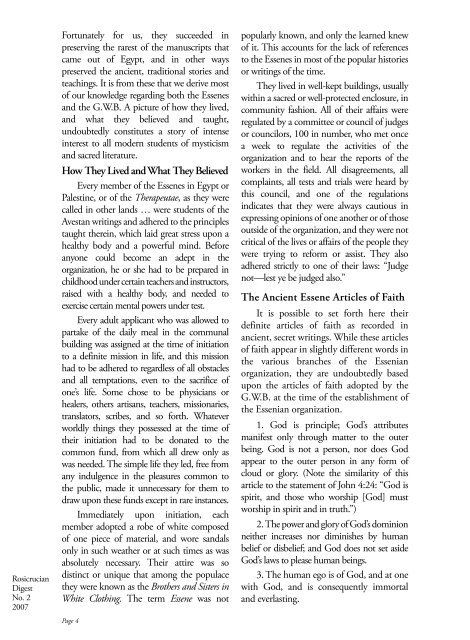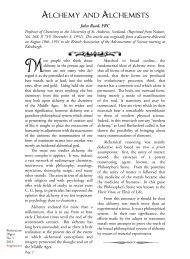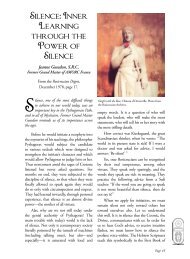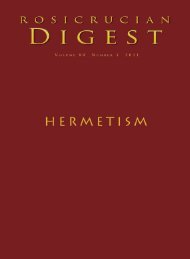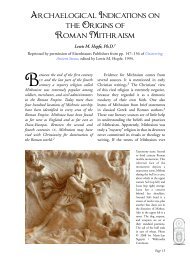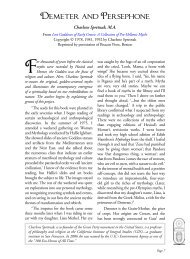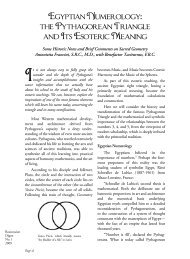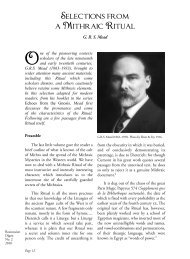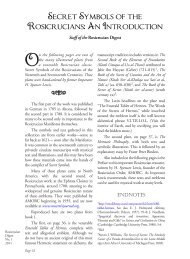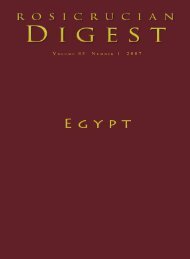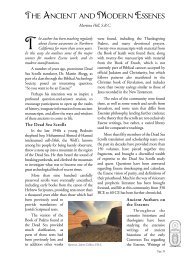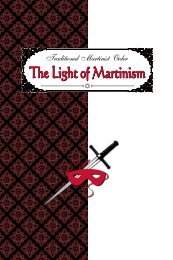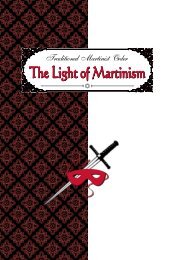Rosicrucian Digest Vol 85 Number 2 2007 - Rosicrucian Order
Rosicrucian Digest Vol 85 Number 2 2007 - Rosicrucian Order
Rosicrucian Digest Vol 85 Number 2 2007 - Rosicrucian Order
You also want an ePaper? Increase the reach of your titles
YUMPU automatically turns print PDFs into web optimized ePapers that Google loves.
<strong>Rosicrucian</strong><br />
<strong>Digest</strong><br />
No. 2<br />
<strong>2007</strong><br />
Fortunately for us, they succeeded in<br />
preserving the rarest of the manuscripts that<br />
came out of Egypt, and in other ways<br />
preserved the ancient, traditional stories and<br />
teachings. It is from these that we derive most<br />
of our knowledge regarding both the Essenes<br />
and the G.W.B. A picture of how they lived,<br />
and what they believed and taught,<br />
undoubtedly constitutes a story of intense<br />
interest to all modern students of mysticism<br />
and sacred literature.<br />
How They Lived and What They Believed<br />
Every member of the Essenes in Egypt or<br />
Palestine, or of the Therapeutae, as they were<br />
called in other lands … were students of the<br />
Avestan writings and adhered to the principles<br />
taught therein, which laid great stress upon a<br />
healthy body and a powerful mind. Before<br />
anyone could become an adept in the<br />
organization, he or she had to be prepared in<br />
childhood under certain teachers and instructors,<br />
raised with a healthy body, and needed to<br />
exercise certain mental powers under test.<br />
Every adult applicant who was allowed to<br />
partake of the daily meal in the communal<br />
building was assigned at the time of initiation<br />
to a definite mission in life, and this mission<br />
had to be adhered to regardless of all obstacles<br />
and all temptations, even to the sacrifice of<br />
one’s life. Some chose to be physicians or<br />
healers, others artisans, teachers, missionaries,<br />
translators, scribes, and so forth. Whatever<br />
worldly things they possessed at the time of<br />
their initiation had to be donated to the<br />
common fund, from which all drew only as<br />
was needed. The simple life they led, free from<br />
any indulgence in the pleasures common to<br />
the public, made it unnecessary for them to<br />
draw upon these funds except in rare instances.<br />
Immediately upon initiation, each<br />
member adopted a robe of white composed<br />
of one piece of material, and wore sandals<br />
only in such weather or at such times as was<br />
absolutely necessary. Their attire was so<br />
distinct or unique that among the populace<br />
they were known as the Brothers and Sisters in<br />
White Clothing. The term Essene was not<br />
Page 4<br />
popularly known, and only the learned knew<br />
of it. This accounts for the lack of references<br />
to the Essenes in most of the popular histories<br />
or writings of the time.<br />
They lived in well-kept buildings, usually<br />
within a sacred or well-protected enclosure, in<br />
community fashion. All of their affairs were<br />
regulated by a committee or council of judges<br />
or councilors, 100 in number, who met once<br />
a week to regulate the activities of the<br />
organization and to hear the reports of the<br />
workers in the field. All disagreements, all<br />
complaints, all tests and trials were heard by<br />
this council, and one of the regulations<br />
indicates that they were always cautious in<br />
expressing opinions of one another or of those<br />
outside of the organization, and they were not<br />
critical of the lives or affairs of the people they<br />
were trying to reform or assist. They also<br />
adhered strictly to one of their laws: “Judge<br />
not—lest ye be judged also.”<br />
The Ancient Essene Articles of Faith<br />
It is possible to set forth here their<br />
definite articles of faith as recorded in<br />
ancient, secret writings. While these articles<br />
of faith appear in slightly different words in<br />
the various branches of the Essenian<br />
organization, they are undoubtedly based<br />
upon the articles of faith adopted by the<br />
G.W.B. at the time of the establishment of<br />
the Essenian organization.<br />
1. God is principle; God’s attributes<br />
manifest only through matter to the outer<br />
being. God is not a person, nor does God<br />
appear to the outer person in any form of<br />
cloud or glory. (Note the similarity of this<br />
article to the statement of John 4:24: “God is<br />
spirit, and those who worship [God] must<br />
worship in spirit and in truth.”)<br />
2. The power and glory of God’s dominion<br />
neither increases nor diminishes by human<br />
belief or disbelief; and God does not set aside<br />
God’s laws to please human beings.<br />
3. The human ego is of God, and at one<br />
with God, and is consequently immortal<br />
and everlasting.


